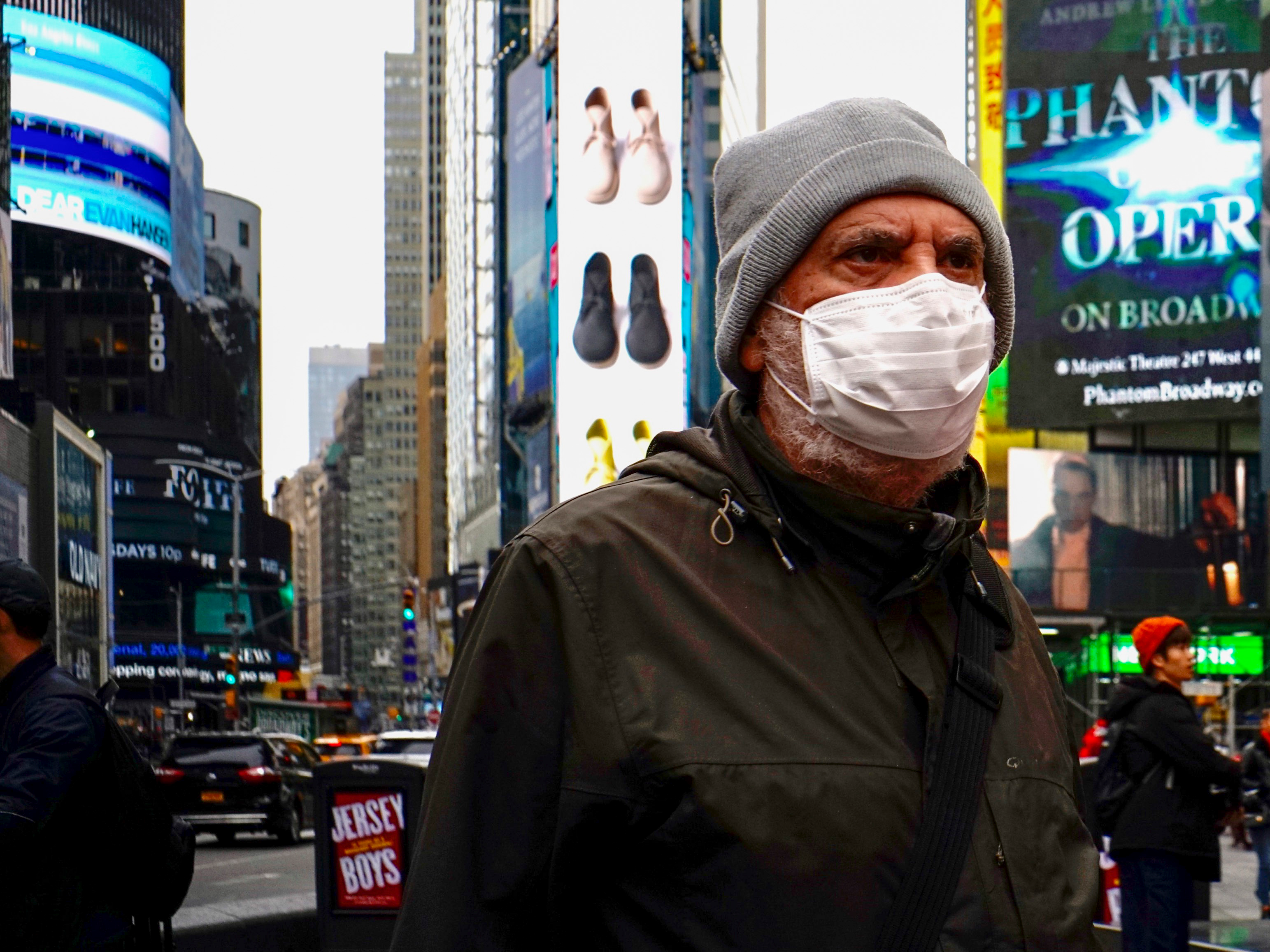- Since the US reported its first coronavirus case on January 20, its total of confirmed cases has risen to more than 69,000.
- At least 1,000 people in the US have died.
- One chart shows how the number of new coronavirus cases reported each day in the US is rising over time.
- Visit Business Insider’s homepage for more stories.
More than 69,000 people in the US have gotten the coronavirus, and more than 1,000 have died.
The US ranks third on the list of countries with the highest number of coronavirus cases, after China and Italy. And the country’s outbreak appears to be getting worse over time – each day brings an equal or higher number of new confirmed cases than the one before.
Its epidemic growth curve looks like a steep staircase.
For a month or so following the first confirmed US case, the number of infected people remained low: less than 15 cases. Then on February 28 - the day after the US' first case of community spread was reported - the number of cases started to rise each day, and that trend hasn't stopped.
Between March 10 and March 13, the number of new US cases tripled - in part due to an increase in testing in state and private labs around the country. Between March 16 and 20, the number of cases tripled again, from about 5,600 to more than 16,600. The last six days have seen the count quadruple: Between March 20 and 26, the number of cases jumped from about 16,600 to more than 69,000.
Failing to 'flatten the curve'
Coronavirus cases have been reported in all 50 states and Washington, DC, along with Guam, Puerto Rico, and the US Virgin Islands. But about 30% of the US cases are in New York State, and more than one-quarter of US deaths have been reported in New York City.
The US' confirmed case count is likely still far lower than the real number of cases in the country, since testing is still limited. According to the COVID Tracking Project - a testing-tracking resource from two journalists at the Atlantic and the founder of a medical data startup - 430,000 tests have been run in the US so far. (They note, however, that those figures may be incomplete due to different state policies on reporting negative tests.)
Here's where the US cases have been reported:
The growing number of US cases over time suggests that the nation has thus far been unsuccessful in efforts to "flatten the curve," or slow the spread of the coronavirus so as not to overwhelm the healthcare system.
The best ways to do slow the virus' spread are to test widely, isolate people who are ill, trace who sick people had contact with to find others who might have been exposed, quarantine anyone who may have been exposed to the virus, close schools and nonessential business, and encourage people to practice social distancing.
Without these measures, the number of cases is likely to keep climbing. Flattening the curve, on the other hand, buys time for US healthcare providers to obtain more tests, beds, and ventilators, and to bolster their arsenal of supplies and treatments to combat the coronavirus.
